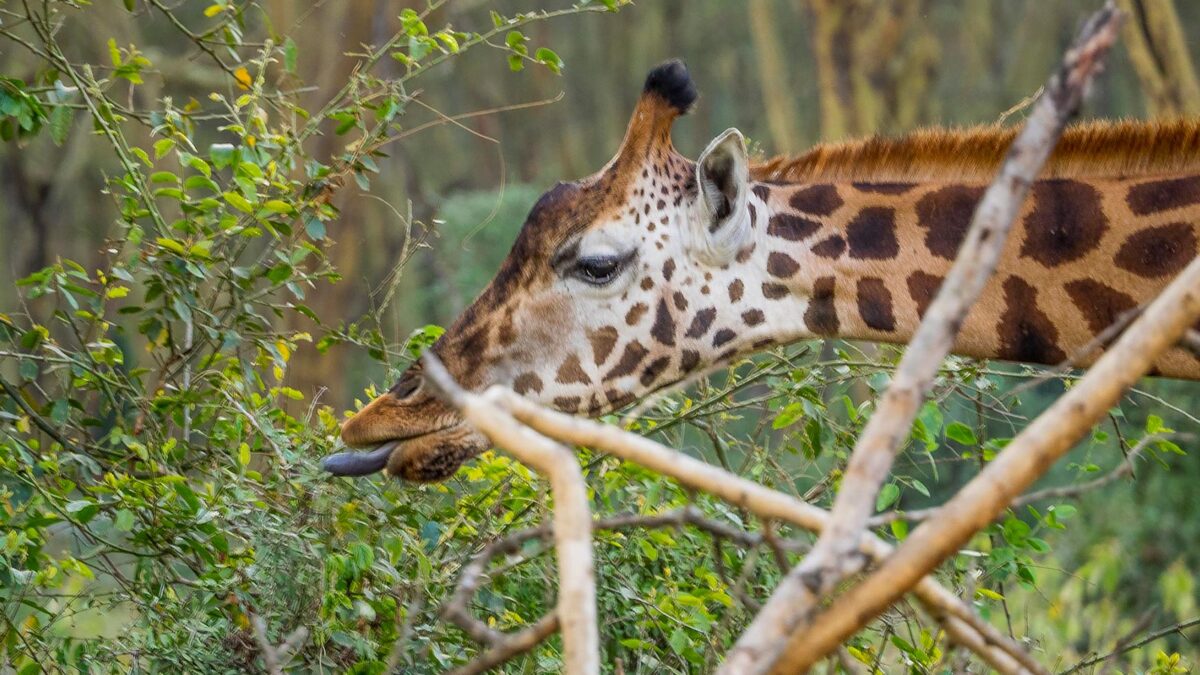Explore Karuma wildlife Reserve

Visit Mpanga Central Forest Reserve
September 12, 2023
Kasyoha Kitomi Forest Reserve
September 12, 2023Exploring the Marvels of Karuma Wildlife Reserve
Nestled in Kiryandongo district, on the western side of Uganda, lies the captivating Karuma Wildlife Reserve. Perched at an elevation of 902 meters (2959.32 feet) above sea level, this reserve boasts a distinctive feature that sets it apart—the resounding Karuma waterfalls, nestled along the awe-inspiring Victoria Nile. These cascading wonders are situated in close proximity to Murchison Falls National Park, Uganda’s largest and oldest protected area, located on the eastern fringe of the national park and just an hour’s drive from Gulu district. Karuma Wildlife Reserve forms part of the Murchison Conservation Area, which includes Murchison Falls National Park, the Budongo Forest Reserve, the Kaniyo-Pabidi Forest, and the Bugungu Wildlife Reserve.
Unveiling the History of Bugungu Wildlife Reserve
Local legend has it that the rocks forming the Karuma Waterfalls were crafted by a powerful traditional spirit named “Karuma,” from whom the falls derived their name. Journeying to the northern districts of Uganda, one cannot help but be captivated by the breathtaking appearance and sounds of these formidable waterfalls. Their spectacle is particularly mesmerizing during the rainy seasons when they gleam as white as snow.
Karuma Wildlife Reserve spans an expansive area of 820 square kilometers (317 square miles) and was designated a Wildlife Reserve in 1964. Initially established as a buffer zone between Murchison Falls National Park and surrounding villages, the reserve has evolved over the years. It now serves as a buffer for the park against human population pressures, with local communities increasingly encroaching into the wildlife reserve. The presence of a refugee settlement in Kiryandongo, accommodating over 7,000 people, has exerted significant pressure on the tourism resources of the reserve.
Wildlife in the Heart of Karuma Wildlife Reserve
Within the Karuma Wildlife Reserve, an array of remarkable wildlife species awaits discovery. Keep your eyes peeled for iconic creatures such as Cape Buffaloes, Elephants, Uganda Kobs, Rothschild’s giraffes, Vervet monkeys, Olive baboons, Black and white Colobus monkeys, L’Hoest’s monkeys, Topis, Hippos, Oribis, and occasionally, the elusive Lions and Leopards.
Avian Splendor: Birds of Karuma Wildlife Reserve
Murchison Falls National Park, a component of the Murchison Conservation Area, is home to over 600 bird species. Among them, you may be fortunate enough to spot the endangered shoebill stork, Abdmin’s stork, yellow-billed stork, Goliath heron, white-faced whistling duck, secretary bird, osprey, Dark chanting Goshawk, martial eagle, Denham’s bustard, Rock pranticole, Senegal thick-knee, Long-toed plover, giant kingfisher, pied kingfisher, malachite kingfisher, red-throated bee-eater, Northern carmine bee-eater, and many more.
Accommodations in Karuma Wildlife Reserve
While Karuma Wildlife Reserve is relatively remote, it offers a few accommodation options:
Luxury Chobe Safari Lodge:
Nestled in Murchison Falls National Park, this five-star lodge is a true jewel in Uganda’s tourism crown. Offering breathtaking panoramic views, the lodge is accompanied by the soothing sounds of the River Nile’s magnificent rapids. Chobe Safari Lodge provides a unique opportunity to experience wildlife, birds, flora, and fauna in an area of the park yet to be fully explored. This region of Murchison Falls National Park is ideal for fishing, elevating the lodge to one of the premier fishing destinations in Africa.
How to Reach Karuma Wildlife Reserve
Karuma Wildlife Reserve can be reached via the Masindi-Gulu highway, which crosses the Nile River. It’s approximately 110 kilometers (68 miles) northwest of Masindi Town and only 70 kilometers (43 miles) south of Gulu Town.
From Kampala via Luwero-Nakasongola:
The 258-kilometer road trip from Kampala to Karuma Wildlife Reserve is accessible by 4-wheel drive, as the park’s roads can become slippery. This route passes through Nakasongola, home to Uganda’s white rhinos, before crossing the Karuma rapids.
From Murchison Falls National Park via Purongo-Anaka:
Covering 125 kilometers, this drive from Paraa park station offers diverse wildlife encounters along the way. Visitors will exit the park at Wankwa gate before driving in a northeastern direction toward Karuma Falls.
The Best Time to Explore Karuma Wildlife Reserve
For the ultimate wildlife experience, plan your visit to Murchison Falls National Park during the dry seasons from December to late February and from June to September. During these times, animals congregate around water bodies, making them easier to observe.
Karuma Wildlife Reserve, with its dramatic waterfalls, rich fauna, and avian wonders, beckons you to embark on a thrilling adventure into Uganda’s untamed wilderness. Whether you’re a nature enthusiast or an adventure seeker, this reserve promises unforgettable encounters with Africa’s wild heart.

